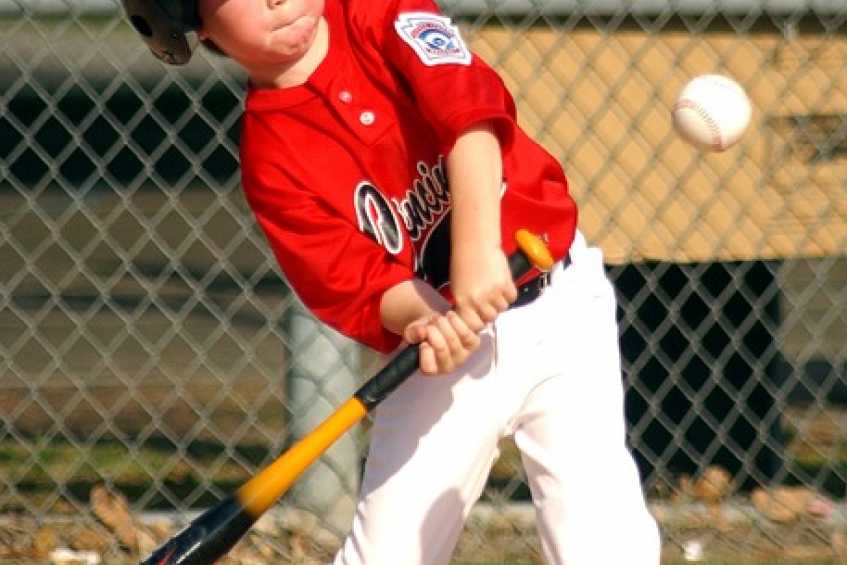
Parents can begin developing a hitter at a young age. The earlier a player gets the thrill of hitting the ball helps develop a love of the game. It is a memorable moment for parents and child when they first wallop that ball. The sound of the crack of the bat, the ping of the metal or the thud of the whiffle ball bat are exhilarating moments for a young hitter. Whatever the sound, hitting a ball and running the bases begins the fun that baseball for the little guy/girl should be. It is never too early to start smacking a baseball, and even 2, 3, or 4-year-olds are not too young when they show some baseball interest.
First, before allowing the little ones to swing, safety is a priority. Keeping everyone and surroundings out of danger is crucial. A whiffle ball and whiffle ball bat are the best tools for the beginner and safety. The big barrel whiffle bat is ideal for producing contact, as long as the weight of the big barrel does not overwhelm the little one. Tennis or other soft balls are sufficient when more room is available. Whenever using a hard baseball bat, the first teaching point is to make sure the youngster doesn't throw the bat with the swing or when going to run the bases after hitting the ball. With the safety side taken care of, the following are ways to begin the making of a hitter at a young age.
Developing a hitter takes years of practice and dedication. Hitting comes easier when players have a love of hearing that crack of the bat from an early age. #baseballtips #baseballhitting Jack Perconte has dedicated his post-major league baseball career to helping youth. He has taught baseball and softball for the past 27 years. His playing, coaching and parenting better experiences for athletes and parents. Jack has written over a thousand articles on coaching baseball and youth sports. Jack is the author of "The Making of a Hitter" now $5 and "Raising an Athlete." His third book "Creating a Season to Remember" is in the works. Jack is a featured writer for Baseball the Magazine. You can also Perconte on YouTube withover 80 fun and innovative baseball instructional videos.
After playing major league baseball, Jack Perconte has taught baseball and softball since 1988 and offered valuable coaching training too. He has helped numerous youth players reach their potential, as well as having helped parents and coaches navigate their way through the challenging world of youth sports. Jack is one of the leading authorities in the areas of youth baseball training and coaching training advice.
All Jack Perconte articles are used with copyright permission.There are 0 comments on "Developing a Hitter at an Early Age - 12 Youth Player Hitting Tips"
CameronPugh says:
"Such a unique perspective on the game..."
On Such a unique perspective on
chandler allen says:
"Hi my name is chandler, i’ve enjoyed..."
On Wanting to tryout for summer ball. as an 18 year old
david graham says:
"With no current MLB team in Canada,..."
On With no current MLB team in